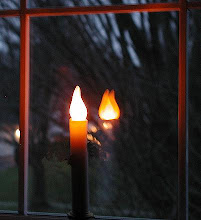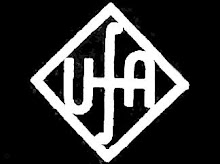Herschel Grynszpan
There was a world-wide remembrance of the anniversary of the Kristallnacht November 9-10.
In November, 1938, a young Jewish boy fired five shots at a German diplomat at the German Embassy in Paris, France. The diplomat died within a few days.
JewishJournal.com
... Today, however, Grynszpan remains a mystery, an irony if only because Grynszpan was among the most famous inmates of the Nazi concentration camp system. Perhaps the most vexing aspect of the Grynszpan case is the fact that he has never been embraced as the heroic figure he earnestly sought to be. His fellow Jews, suffering through the catastrophic aftermath of his act of protest at the German embassy in Paris, “generally disapproved of it as useless, dangerous and a great disservice to Jews everywhere,” according to Gerald Schwab, one of the principal investigators of the Grynszpan case.Once again, children soldiers... maybe a boy of 17 should not be considered a child, but he was very young.
One of Grynszpan’s own attorneys, richly paid to defend him in the French courts, dismissed him privately as “that absurd little Jew.” Hannah Arendt pronounced him to be “a psychopath” and, even more shockingly, accused him of serving as an agent of the Gestapo. Jewish armed resistance against Nazi Germany is much studied and celebrated, but Grynszpan remains without honor even among the people whose avenger he imagined himself to be.
The effacement of Herschel Grynszpan, who wrote and spoke so ardently about his deed to lawyers, judges, politicians and reporters in the months and years following his arrest, would have broken the boy’s heart. His prison journals, which were carefully preserved and studied by both French and German authorities, reveal that the lonely and frightened adolescent yearned not merely for attention but for a place of consequence in the saga of the Jewish people. “He thought the only end to isolation was to reach the point where he was no longer separated from the true struggles that went on around him,” writes Don DeLillo of Lee Harvey Oswald in the novel “Libra,” but the same words surely apply to Grynszpan. “The name we give to this point is history.”
As we observe the 75th anniversary of Kristallnacht, we ought to pause and recall the 17-year-old boy who was among the very first Jews to fire a weapon in defense of the Jewish people during those dark years. “For three lines in history that will be written about the youth who fought and did not go like sheep to the slaughter,” insisted the martyred ghetto fighter Dolek Liebeskind, “it is even worth dying.” Yet the search to find examples of Jewish resistance has failed to acknowledge the exploits of Herschel Grynszpan...
Like the German youngsters of the Weisse Rose, he sought to fight oppression and was killed.
Young People of the Weisse Rose
His Play - that which he did to differentiate himself from the Established World of Order (and, in his case, the World of Order and Society included a blind acceptance of a coming Holocaust) - was to search for the meaning of his life within that of his people, within that of humanity, within that of the Earth. He sought radical freedom by attempting to kill a symbol of oppression.
Perhaps that is why he is ignored: he had not the good fortune to be able to wait 4 or five years later and be a part of a structured Jewish resistance group or a Zionist group... he was a loner, and his action bore little fruit, except to bring the wrath of the Nazis down on the heads of the Jewish community.......
Perhaps if Herschel had his own Irgun, we would be emulating him and reading about his strategies, instead of speculating upon his weaknesses.
In fiction, in Ender's Game, Ender Wiggin has his own army, and we follow him.
Herschel had no army.
And the Game was rigged against him.
--



















No comments:
Post a Comment